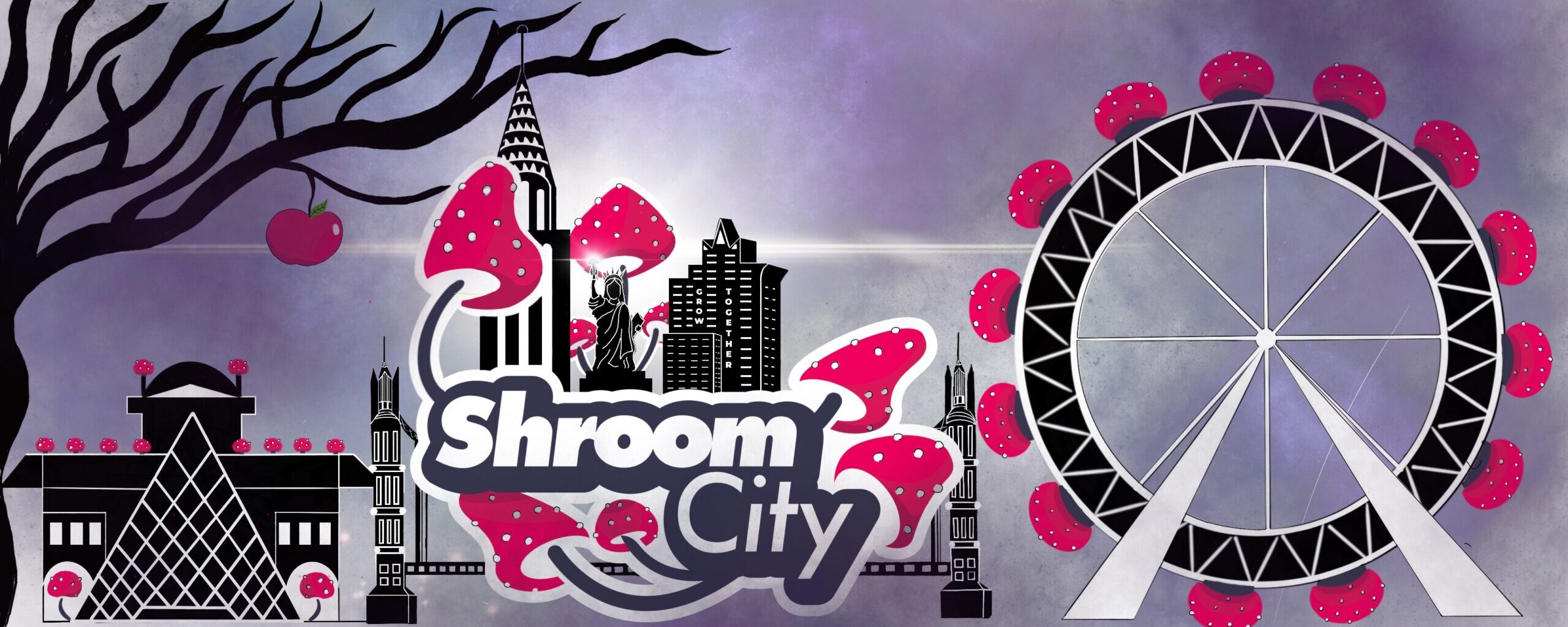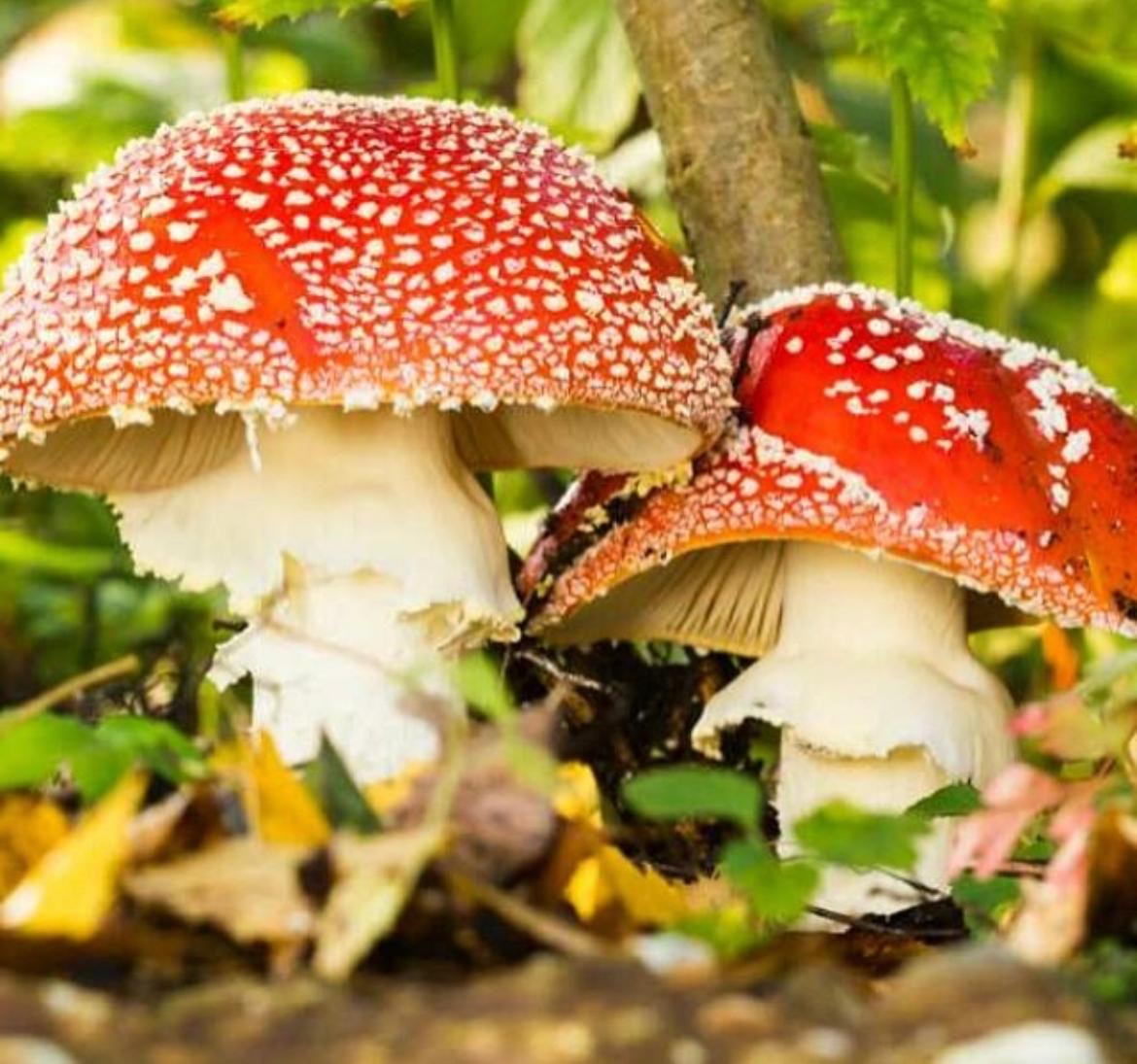Amanita Muscaria
No mushroom has gathered unto it more folklore and mythology than this white-spotted fairytale fungus.
As the name suggests it was formerly used as an insecticide, with pieces often floated in milk, to intoxicate and kill flies attracted by its aroma.
It is commonly found in the Northern Hemisphere where it is native to temperate and boreal region, but has been introduced to many countries in the Southern Hemisphere. It lives in a symbiotic relationship with various deciduous and coniferous trees, in which it provides water and nutrients in exchange for their photosynthesic products.
The Amanita Muscaria, whose common name is “Fly Agaric”, is a large white-gilled, white-spotted usually red mushroom. It is widely encountered in popular culture. In the Mario franchise, Amanita muscaria is used in its Super Mushroom power up.
It is classified as poisonous, but human deaths from ingestion are extremely rare. Boiling and draining the mushroom weakens its toxicity and breaks down its psychoactive substances. It is eaten in parts of Europe, Asia and North America.
The fly agaric may have been the earliest source of entheogens, that is hallucinogenic substances used for religious or shamanic purposes, the use of which date back possibly over 10,000 years. It contains the psychoactive chemical compounds muscimol and ibotenic acid, as well as muscazone and muscarine. These are very different psychoactive compounds than the ones found in “Magic Mushrooms” such as Psilocybe semilanceata (psilocybin and baeocystin).
Some believe that Lewis Carrol had experiences the hallucinatory effects of Amanita muscara. In Alice’s Adventures in Wonderland, Alice eats part of one side of a mushroom and grows shorter; a piece from the other side would make her taller.
Some may argue that Father Christmas, or Santa Clause, has a red-and-white coat as a reference to Amanita muscara. Reindeers are know to eat these mushrooms and – can fly!
The fly agaric is depicted in garden ornaments, children’s picture books depicting gnomes and fairies, such as the Smurfs.
Inside France’s medieval Plaincourault Chapel, a depiction of the Garden of Eden shows that between Adam and Eve stands a large red tree, crowned with a dotted, umbrella-like cap. The tree’s branches end in smaller caps, each with their own pattern of tiny white spots. The idea that the Tree of Life was actually A. muscaria pops up in the 1925 book The Romance of the Fungus World, which presents a “curious myth” about the Plaincourault fresco depicting the hallucinogenic mushroom, though there is no suggestion of its use by early Christians.







Love this!